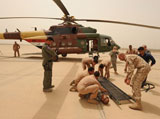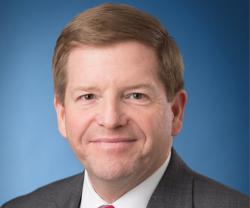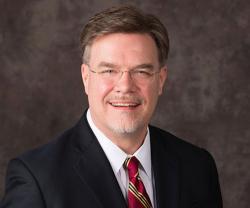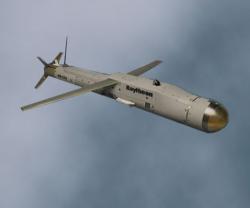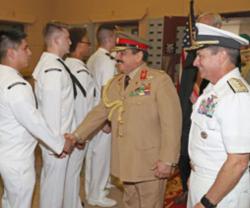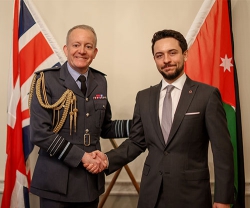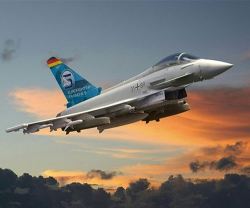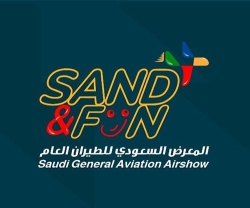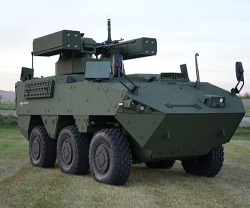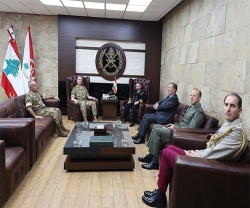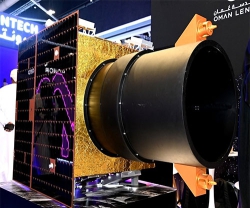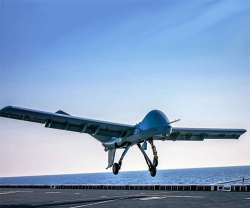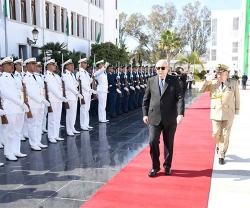The mission allowed the pilots and crews from the two militaries to better understand each other's way of doing business, explained Capt. Jennifer Sims, a pilot on one of the Black Hawks, and the headquarters company Commander for the 1st General Support Aviation Battalion, 171st Aviation Regiment, of the Georgia Army National Guard.
Both American helicopters that took part in the training mission were from the 1-171 GSAB, which is attached to the 40th Combat Aviation Brigade during the brigade's yearlong deployment to Iraq in support of Operation New Dawn.
The Black Hawk crews shared hot tea with their Iraqi peers, a traditional gesture of hospitality, before taking flight behind the two Iraqi Air Force helicopters. The Iraqis were flying an American-made UH-1 "Huey" utility helicopter and a Russian-made Mi-17 transport helicopter.
The four helicopters flew together from Camp Taji over Baghdad before landing at the Baghdad International Airport, or BIAP, where the crews were met by U.S Air Force personnel and members of the Iraqi Security Forces and conducted ground training.
Sims said there are challenges during mixed multi-ship flights, such as this one. The biggest challenge is the language barrier, she explained.
Dissimilar equipment, radio systems and flying skills create a different flying environment than when flying with American pilots only. So when the pilots from the two militaries get the chance to fly together, it leads to familiarization and better coordination while in the air, she said.
"Anytime we work together, it's a gain," said Capt. Andy Parker, Chaplain for the 1-171. Parker said he was on the mission to interact with his Iraqi counterparts. He said his interaction was very positive. "They see we're not here to be the Lone Ranger when we work together as a team. It builds rapport," Parker said.
"They are good pilots and we learn from them many things," said the Iraqi Commander who flew the UH-1 Huey during the training flight. "We have a good relationship with the American side. This is not our first flight together."
A 22-year-old Iraqi second lieutenant from Baghdad flew the Iraqi Mi-17. "It's like flying a beast - the power," he said of his large transport aircraft. He said he enjoyed having the opportunity to fly with American pilots. "It shows the cooperation with the two sides."
Spc. Michael Kelley briefed Iraqi medics on the equipment used in his specialized medical evacuation helicopter. The Iraqis then briefed the Americans on their equipment before they practiced loading patients onto the aircraft.
"The partnership offers opportunities to share tactics, techniques and procedures (TTPs), both Iraqi and American," said Lt. Col. Steven Ballew, U.S. Air Force medical advisor with the Iraq Training and Advisory Mission - Air. "They have the way they do things, we have ours. It's always good to get together and share TTPs."
Source: US Army

